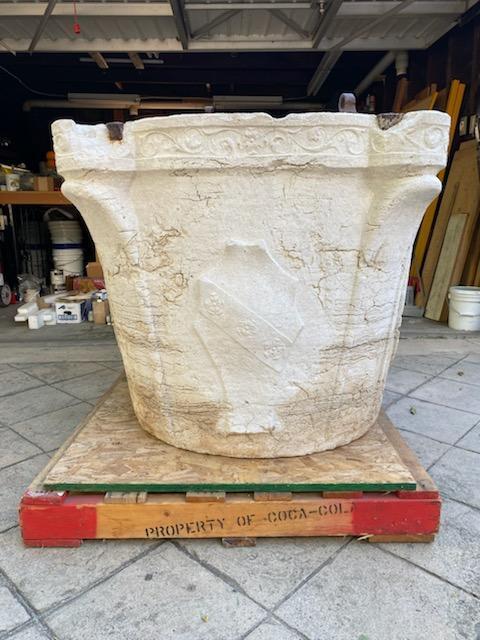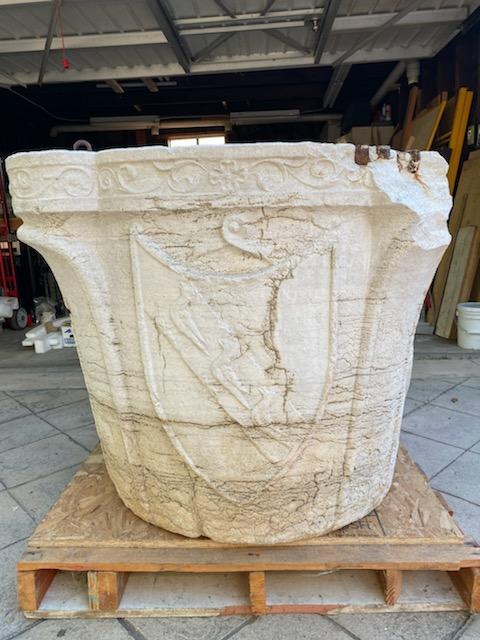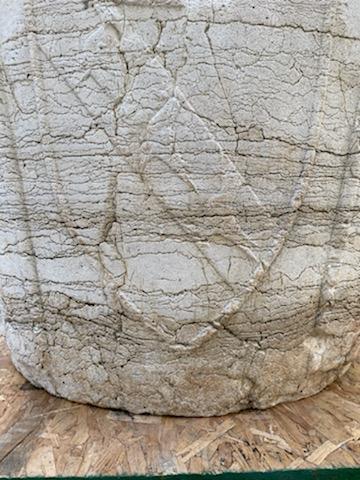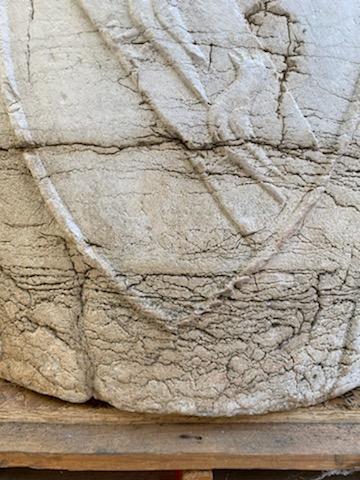William Randolph Hearst (1863–1951) amassed diverse collections for more than seven decades, encompassing European paintings and sculpture, manuscripts and rare books, tapestries, antiquities, and the widest conceivable array of decorative arts. This includes global antiquities, European and American paintings and sculpture, and an eclectic range of ritual objects and decorative arts from reliquaries to precious clocks, lamps, and sarcophagi.
One such sculpture at Hearst Castle is a 15th-century Italian marble wellhead. If you’re facing Casa Grande, you’ll see it sitting atop basalt black granite steps, to the left of the entrance. Upon examination earlier this year, a professional conservator noticed rust on the upper lip of the wellhead. The expansion of the corroding iron had exerted pressure within the profile of the stone. Plus, one of the rounded corners of the wellhead had fully detached and was missing. A second corner was also completely detached, but still held in place by lead that surrounded the iron elements. The two remaining corners had missing areas associated with iron inserts and one of them had extensive iron staining.
In addition, the surface stone was slightly worn. The extent of the deterioration was more pronounced in the lower regions of the marble, where the surface is much more pitted, and the lines of the bedding showed more erosion. In these areas, there was lichen and other biological growth, indicating prolonged exposure to moisture.
The Foundation at Hearst Castle agreed to fund the restoration of the white marble wellhead. The goal of this summer’s treatment was to rectify the issues that compromised its future stability, namely the iron remnants and water penetration into the pores of the stone.
The conservator removed the iron elements and lead encasings, and chemically sealed the remaining iron remnants (still within their lead casings) to prevent future corrosion. He removed all surface soiling and biological growth. Next, he adhered into place small, detached shards and chips, while he pinned into place two larger corner pieces with stainless steel dowels for structural stability. He filled the cracks and broken joints to mimic the surface level, and then he repainted and molded the rounded portions of the missing sections. The conservator applied herbicide and sacrificial surface, too. Finally, to protect it from the elements, he raised the wellhead above its stone surface with one-quarter inch plexiglass rounds.
Since 1985, The Foundation at Hearst Castle has raised funds to support the conservation of pieces like this 15th-century Italian marble wellhead. Incredibly, Hearst Castle’s museum collection houses over 25,000 pieces of art, though William Randolph Hearst collected over 250,000 pieces during his lifetime. As stewards of the collection, we are honored to help with ongoing maintenance and conservation.
To support our efforts, please consider making a contribution today. Learn more about how you can help.

The Foundation at Hearst Castle agreed to fund the restoration of the white marble wellhead.

One of the rounded corners of the wellhead had fully detached and was missing, while a second corner was detached, but held in place by lead that surrounded the iron elements.

The extent of the deterioration was more pronounced in the lower regions of the marble, where the surface is much more pitted, and the lines of the bedding showed more erosion.

In these areas, there was lichen and other biological growth, indicating prolonged exposure to moisture.

He filled the cracks and broken joints to mimic the surface level, and then he repainted and molded the rounded portions of the missing sections.

The conservator removed the iron elements and lead encasings, and chemically sealed the remaining iron remnants (still within their lead casings) to prevent future corrosion.

Since 1985, The Foundation at Hearst Castle has raised funds to support the conservation of pieces like this 15th-century Italian marble wellhead.







